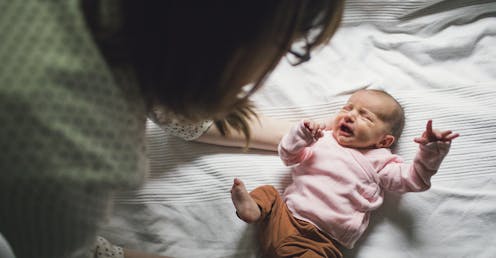Parental leave laws don't do enough for single moms – but there's a way to fix that
Single mothers need more of a break than they get under current laws.

New moms may have trouble enjoying Mother’s Day 2020.
As this crisis has unfolded, pregnant women have been forced to work without proper protective gear, with some choosing to quit rather than risk exposure to the coronavirus and contracting COVID-19. Many others will be among the 30 million American workers who have become unemployed without having any say about it. And some of those who are still working will reasonably fear any missed days could mean they’ll soon be laid off.
The good news is that a growing number of states, including New York, New Jersey and California, have passed family leave laws that can help. Parents in these states who have been regularly working can get benefits for a short time while caring for newborns or recently adopted children.
The laws address a major gap in American workplace policy. The United States is the only developed country that fails to guarantee paid parental leave to all workers.
Having studied parental leave laws around the world, I believe the new U.S. laws are a crucial step forward. But I think they treat single parents, most of whom are women, unfairly.
Promoting gender equality
Nearly all developed countries guarantee mothers at least three months paid maternity leave, while fathers often receive a much shorter paternity leave. Some countries supplement this sex-specific structure by offering families an additional period of shared parental leave, which is also typically used by mothers.
The U.S. model is very different.
The state leave laws, and a similar policy that will soon cover most federal workers, provide each parent an equal and individual right to take paid time off without having to worry about losing their jobs.
For example, in New York state, moms are currently eligible for up to 10 weeks of partial wage replacement, and so are dads. Both members of a same-sex couple can qualify, so long as each is legally recognized as a parent.
This structure is designed to encourage fathers to take time off. Early evidence suggests it works. In California and Rhode Island, men account for almost 40% of parental leave claims. This rate is far above the average for industrialized countries of 18%, and very close to that of international leaders.
Studies of men who take parental leave suggest that those dads will be more engaged parents months, or even years, later. Having more men take leave can also promote equality at work and at home.
I agree it’s essential to encourage men to do their fair share of child care. The crisis highlights longstanding gender inequities, with moms being far more likely than dads to put work aside to meet the needs of their children who are suddenly at home full-time.
Half as much
The U.S. structure, however, disadvantages single-parent families, as they can claim only half as much time off as two-parent families. This is a significant problem because about 40% of U.S. births are to unmarried parents.
There are large disparities on the basis of race and ethnicity, education and income. In short, unmarried parents are particularly likely to be vulnerable workers, at heightened risk of losing their jobs during the pandemic.
Where unmarried parents are living together, or otherwise both involved in child care, it makes sense that each should be able to take parental leave. But many single parents, disproportionately women, raise children on their own, even from birth.
An alternative model
Other countries that set aside parental leave time for each parent address this issue by having special rules that apply to parents with sole custody. For example, in Iceland, mothers and fathers each get three months of leave, and either parent can use an additional three months. Single parents, however, can use the full nine months that a couple would be able to take.
As I will propose in a forthcoming paper, U.S. laws could be made more fair by allowing single parents to receive as many weeks of benefits as two-parent families. Or the laws could be changed to allow a single parent to share benefits with a different family member, such as a grandmother, who could help with care. Because the cost of providing benefits is spread through the tax system, this approach would provide much-needed support for single parents without placing an extra burden on individual employers.
Without a change like this, the nation’s approach to parental leave will continue to provide less help to the families who are likely to need it the most.
An earlier version of this article was published on Jan. 14, 2020.
[You’re smart and curious about the world. So are The Conversation’s authors and editors. You can read us daily by subscribing to our newsletter.]
Deborah Widiss received funding from the Australian-American Fulbright Commission for research on parental leave policies. She serves as an unpaid consultant for the Indiana Institute for Working Families; she has advised the organization on legal issues related to the gender wage gap and job protections for pregnant workers.
Read These Next
What’s at stake in Trump’s executive order aiming to curb state-level AI regulation
In the absence of comprehensive federal AI regulation, states have stepped in. The Trump administration,…
Can scientists detect life without knowing what it looks like? Research using machine learning offer
A new machine learning model explores the boundary between biological and nonbiological chemistry.
Sharks and rays get a major win with new international trade limits for 70+ species
Sharks have had a tough time since the 1970s, when overfishing, habitat loss and a growing trade in…





